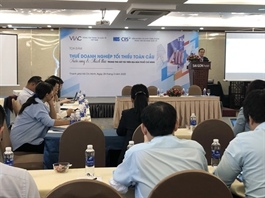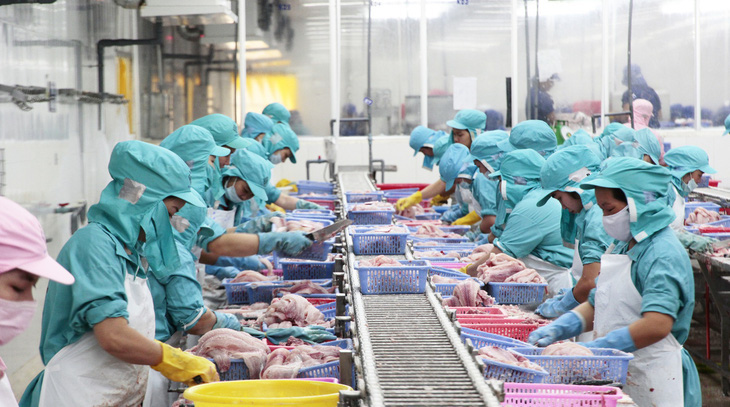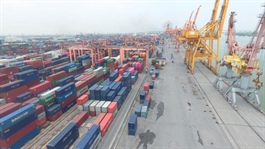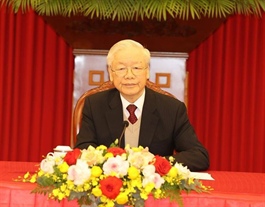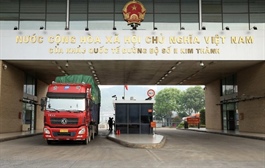Hanoi to bolster interprovincial ties for Red River Delta growth
Hanoi to bolster interprovincial ties for Red River Delta growth
In recent years, Hanoi has taken effective measures to overcome challenges and accomplish strong socioeconomic growth.
Hanoi aims to become a smart and cultured city that leads the socioeconomic development of the Red River Delta region and the country.
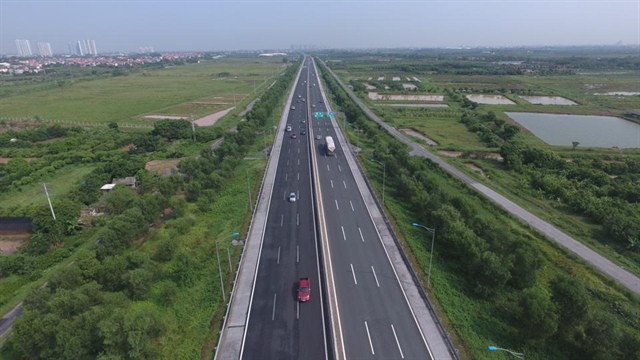
The Hanoi-Hai Phong Highway that connects the capital city to Hai Duong Province and Hai Phong City. Photo: Cong Hung/The Hanoi Times |
Tran Thi Phuong Lan, Acting Director of the Hanoi Department of Industry and Trade, shared that idea at a conference on the socioeconomic development of the Red River Delta Region, stating that the Hanoi government is adamant about working with neighboring provinces and cities to reinforce their mutual ties and further the region's growth.
She said that in order to achieve the goal, Hanoi wants to make it easier for businesses to operate, help them become more competitive in the market, and promote the socioeconomic development of the Red River Delta.
"Municipal authorities will also assist investors and business communities in resolving issues with laws pertaining to the investment environment," she noted.
Additionally, Hanoi will enhance the development of smart infrastructures, and set up top-class trading centers, terminal markets and shopping outlets both regionally and nationally, Lan said.
As the nation's hub for politics, business, culture, and technology, Hanoi has implemented sensible policies and made significant strides in its socioeconomic development.
In 2022, the total capital of FDI projects in Hanoi increased by 10.3% annually, hitting nearly US$1.7 billion. In comparison to a year ago, total retail sales grew by 25% to VND700 trillion (US$29.8 billion), and export revenue increased by 10.3% to US$17.1 billion.
Lan asserted that despite the excellent results, the legal environment is inadequate to support groundbreaking moves and that ties between Hanoi and its neighboring provinces have remained weaker than expected.
To execute resolutions set by the government and Politburo, the country's most powerful body, to support continued growth in the Red River Delta region through the year 2045, the Hanoi authorities place a high priority on the aforementioned solutions.
The Red River Delta is one of the country's key strategic regions, so it is crucial to handle both opportunities and challenges in the region's development, according to Nguyen Hong Son, Deputy Head of the Party Central Committee's Economic Commission.
According to him, the region's ability to connect with other regions and neighboring countries thanks to its well-built highway network makes it the primary engine of Vietnam's socioeconomic growth.
Son said the area must demonstrate its leadership in restructuring the Vietnamese economy towards incorporating modern science, technology, and invention.
The region will benefit from the finest policies to spur innovative developments, lure domestic and foreign investors, and promote mutual growth for regional provinces, cities, and bordering regions.
The main barriers to the region's future development, according to Son, are small-scale economic activity, low productivity and efficiency, weak market competitiveness, and a lack of market integration. In addition, there are also issues with the socio-economic infrastructures, the transit facilities, the regulatory system, and the interregional and interprovincial connections.
Meanwhile, Nguyen Thi Bich Ngoc, Deputy Minister of Planning and Investment, the region will require significant capital investment for infrastructure development in order to ensure that all socio-economic growth goals are met.
The North-South Expressway East, the ring roads connecting Hanoi and surrounding communities, the growth of international airports, and the operation of Hanoi urban railways are among the major projects, she said.
Le Viet Nga, Deputy Director of the Ministry of Industry and Trade's Department of Domestic Market, believes that provinces and cities should move quickly to better their development plans, particularly in the area of urban planning, which has fallen short of expectations.
To increase their market competitiveness, she said, "each of the regional provinces and cities must develop their own supply chain and strengthen the joint partnership." Nga encouraged regional provinces and cities to explore the full potential of their joint agreements and capitalize on their advantages to advance development.








